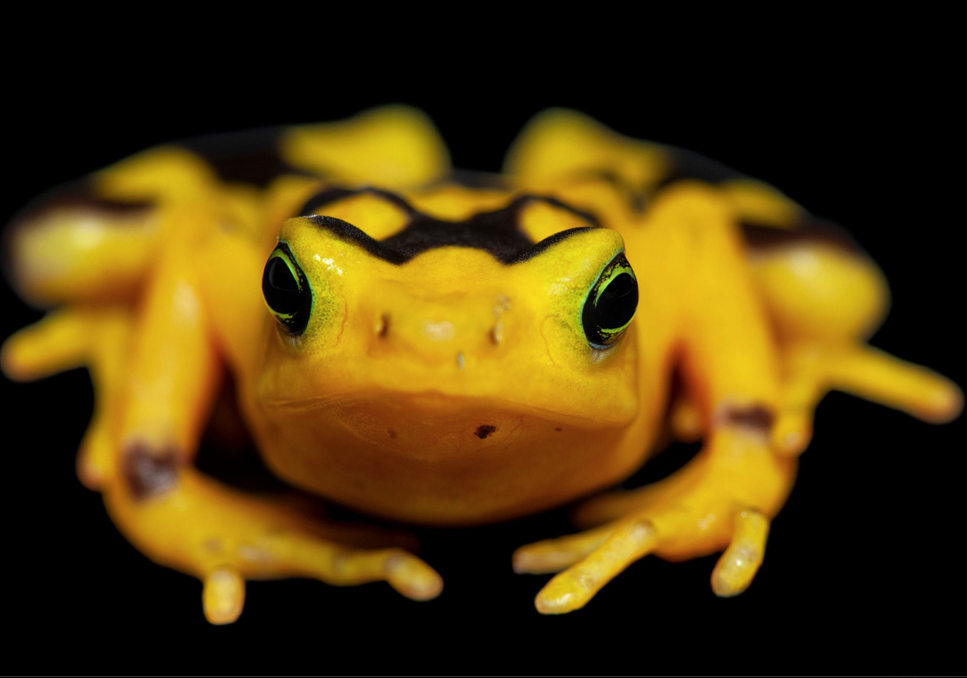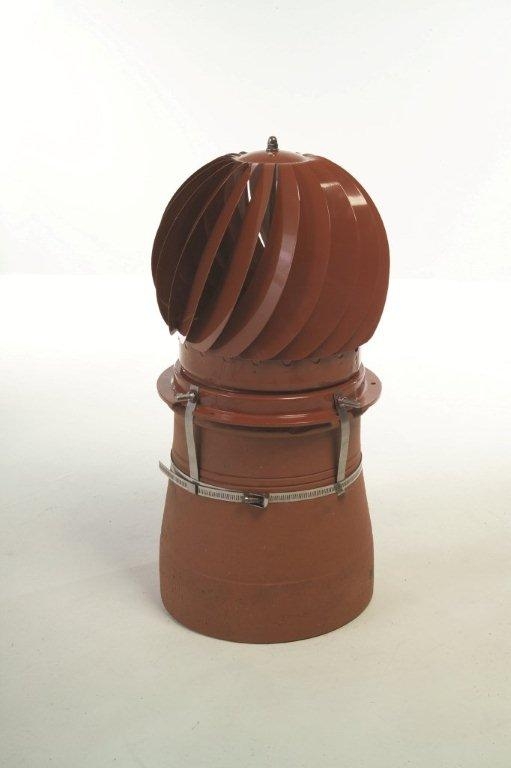((Note: this is post of mine from a different site that is about a year old, but thought I would share it here too in case it helps anyone))
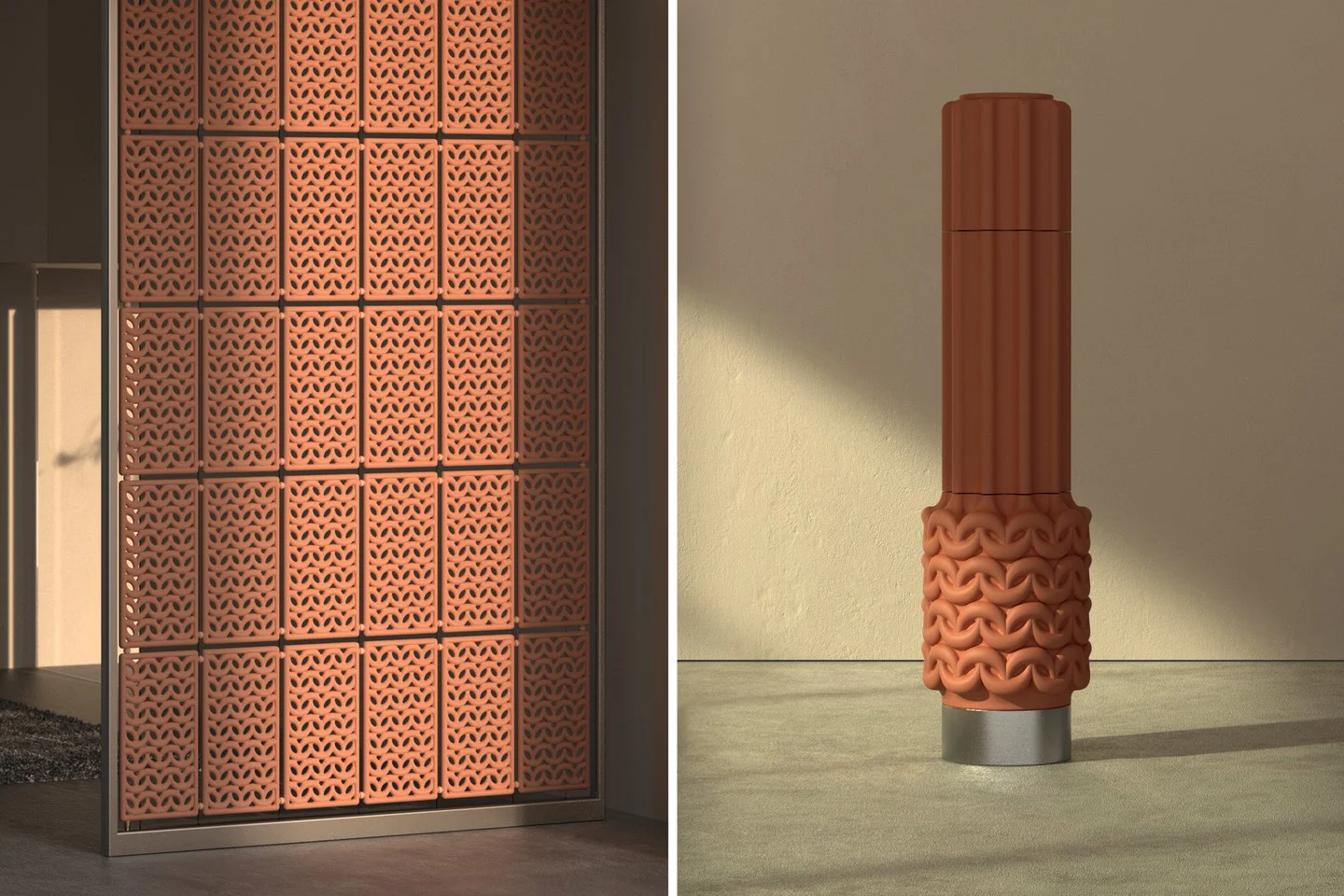
Old technology is once again getting attention, and this time it’s air-conditioners made out of terracotta clay.
“She was inspired by the Palestinian Jara, a traditional clay water container that is hung from the ceiling to cool water and cool the air. Specifically, the water contained in the hollow internal structure moves outward through the porous clay walls. With the heat of the air, it evaporates and is transformed into water vapor. This reaction absorbs heat from the surrounding air, cooling the water, the material itself and consequently the air in the room.” Forbes India In regards to Yael Issacharov.
There are two unrelated people currently being mentioned for promoting their designs using this technology; Monish Siripurapu(from India), and Yael Issacharov(from Israel).
Monish Siripurapu’s design is based off a beehive and uses a small pump to create a beautiful water fountain that both cools the air and can be used for gardening.
Yael Issacharov’s design uses no electricity, and instead relies on the naturally porous nature of the clay.
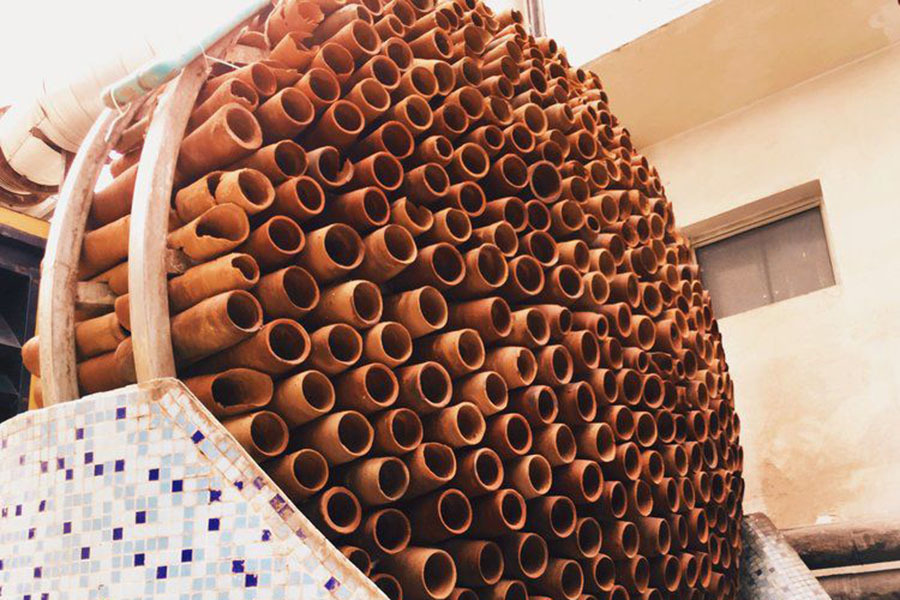
For dry and hot climates, this old technology could provide cooler air at an affordable price. The clay is readily available almost entirely world-wide, making it accessible and inexpensive.
"The humid clay traps some heat the air and the surrounding air gets cooled down to around 6-10⁰ C due to the process of evaporative cooling.“ EcoIdeaz in regards to Monish Siripurapu
Videos with more info:
Based on this information, I am wondering if a terracotta pot and a fan would have the same effect for a small room. Here’s a drawing of mine to help explain what I mean:
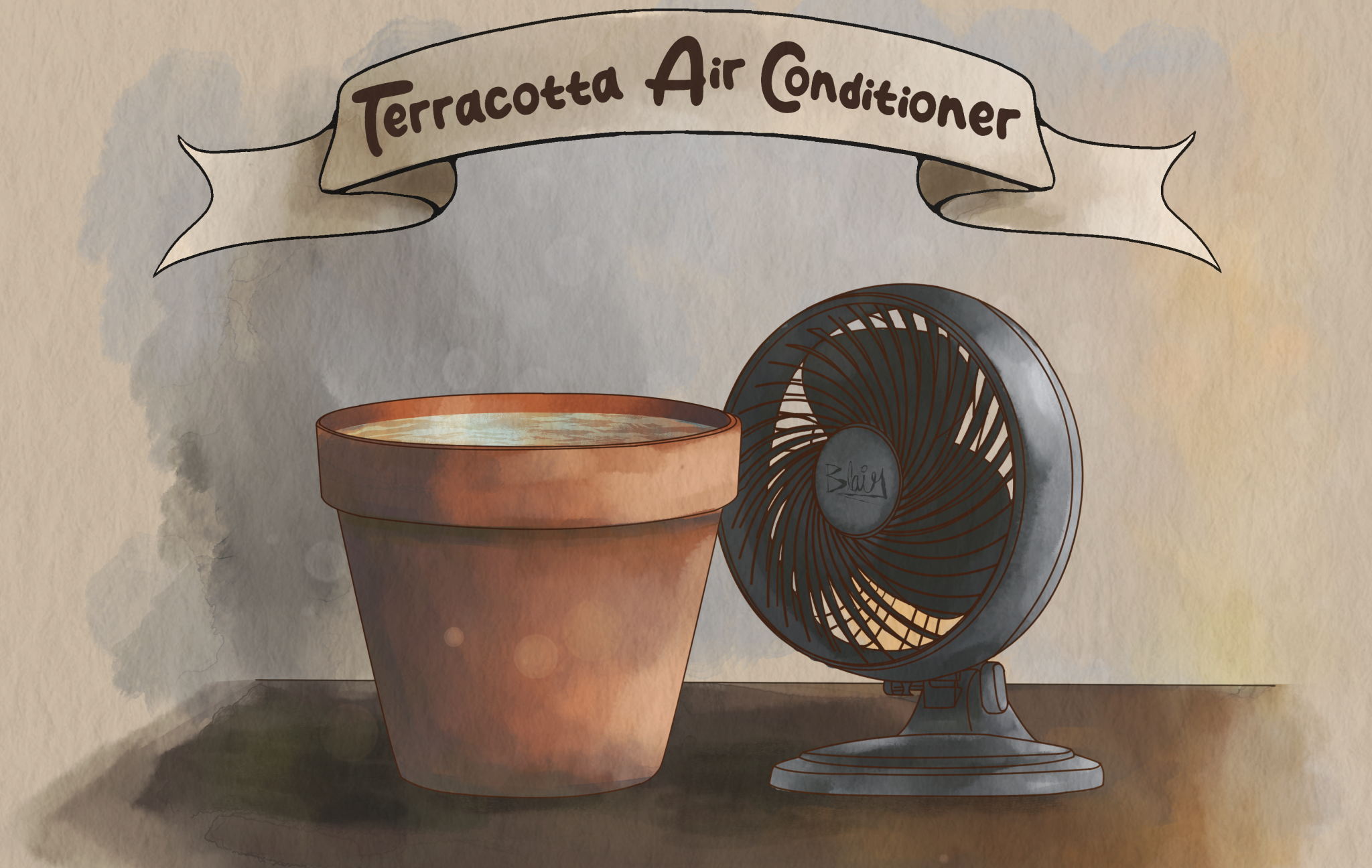
Not for humid environments! Despite being called a swamp cooler it will not work well in a swamp!
I think it’s called that because it will make your environment a swamp.
The principle is simple enough. Look into ‘swamp coolers’ or evaporative coolers. They work well with adequate airflow, until the air reaches the point where absorbing more moisture becomes less efficient, somewhere around 60-100% humidity. More airflow with low humidity air helps. The solid state/ no moving parts is what fascinate me about this design.
The wall panel one in the first left picture is also aesthetic, and modular. Makes me want to cast some terra cotta. I"m trying to think thru how one would channel the cool air in the direction one would want it to flow, without electricity or moving parts. Sort of a funnel shape leading from the cooling part, to guide the cool air in the right direction regardless of the wind’s direction.
I’m sceptical of evaporative coolers. In the short term it might work well, but it increases humidity. That leads to sweating being less efficient and generally a worse situation than before.
There would need to be a way to remove moisture from the air, which ironically was the original purpose of air conditioners, not temperature.
They do not work well in already humid environments but in a hot and dry climate they do quite well. It absolutely does add to the humidity (obviously) but speaking from experience I’d rather have a evap cooler than not if my AC is out.
The largest difference in utilizing one over AC is that they rely on airflow so you need to actually ventilate the area you are cooling as compared to AC where you want a sealed space.
The main driver is power efficiency. Only thing they are doing is running a small water pump and a big fan.
Evaportaive coolers are only effective in low humidity enviroments like a desert. Unless the room is hermetically sealed, the cooler wouldn’t add enough humidity into the air for you to notice.
If you use it in a high humidity environment its just not gonna work.
The moisture is why this really only works in arid climates.
If you try this in more humid clicates, you’re gonna roll the dice on getting mold in your house.
You are unfortunately wrong in your scepticism, they’ve been used for millennia to great effect, and are even part of how ice was made.
In a modestly arid climate (like a mountainous region) with 30% ambient humidity, you can achieve, a 12 °C drop, that’s a lot more than the ~10% of lost sweat cooling.
It’s not just about losing sweat cooling. Humid air is better at conducting heat (because water is), so if the air temperature exceeds your external body temperature, then it accelerates the heat being conducted into your body.
Check the source, net difference is 10%
I’ve only skimmed it, but Figure 1 shows their skin temperature consistently above the 31°C air temperature, so the humidity should inhibit evaporation of their sweat, which is bad for body temperature, but the humid air should still be conducting heat away from their body rather than into their body.
Check out figure 2 it shows equivalent cooling in energy units. Meaning how much energy is carried away by perspiration, and showing it for different levels of humidity. I read it as between 5-10% lower at higher humidity.
Compare that to the radiant heat difference (from 32 degrees to 22, as per the cooling chart) which cools you about 286 % more. And with convective cooling we expect even more at higher temperature differences.
(Calculated with Boltzmanns law for 310 K body temperature)
Thanks for explaining that!
If you do, please share!! I would love to see the process. I don’t know if it helps, but I did some digging and found this:
It uses a revolving chimney cowl(a no-power way to increase air-flow) attached to a terracotta clay base. Perhaps the spinner concept would work for the funnel part you were talking about?
apparently those little spinners are really inefficient at doing anything other than spinning
Dang! Well, I guess I will have to leave the inventing to everyone else haha. 😆
I have no idea how it would be in this scenario, but in their intended purpose of pulling vapors out of a bathroom or whatever it is people use them for, apparently some non-moving plastic wing thing is better
Here, so they are mostly sold for on top of chimney ducts(to help pull out fumes), or fresh air ducts(to help push air in). SO my theory was to have the spinner in the wind (perhaps out a window) to help push air through the terracotta.
Good thing no one built it. It wouldn’t have worked, and neighbours would have thought they were insane 😆
Thing is, physics requires the warm air to move up (convection). Tho’ it did give me a chortle. ;-)
If I did do it, I would for sure share. They have clay working tools, etc, at our local maker space. So it could happen.
OH! I didn’t mean use it as a chimney cowl, I just meant use the rough idea of it (like putting it on it’s side, so the spinner is out the window, or something, so the wind spins it and pushes air in). Though as someone has already pointed out, the spinners apparently don’t help at all, so my idea would not help you either way. 😆
LoL, I appreciate the input anyway. It’s all about getting us thinking, and creating solutions.
So apparently a swamp cooler for a single house uses as much water per day as it takes to water 250-1100 m^2 worth of lawn, or 125-550L per day. Not great for regions with water shortages, which have a pretty big overlap with regions that are arid enough for swamp coolers to be effective. Given the salt buildup, sea water is not an option, so you really need to spend a lot of fresh water to get this to work.
Honestly, I think solar powered electric air conditioning is more environmentally friendly in most use cases, at least until you cut massively on agricultural water usage.
Though of course the best air conditioning is shaping housing and lifestyles to need it less. Build into (artificial) hills or mountains, use shade, use air currents, live densely so less AC is necessary and other people can benefit from it. Work in the morning and the evening but take a >4 hour lunch/siesta break when the day is hottest.
As someone currently using a swamp cooler in a desert climate with daily temps around 40C, that statement is absolutely misleading!
A more accurate statement could be that they cycle 125-550L of water a day, but aside from what’s evaporated, it’s basically a closed-loop system, with very little water waste or loss.
evaporative coolers are very common in desert climates in the US. they work really great up to about 60% humidity and cost less than 10% to operate compared to ‘regular’ AC. they use little power (can easily be solar powered), and do not pollute.
i have both an evaporative cooler and an AC unit and have rarely felt the need to use the AC - the evap works exceedingly well for keeping the temps tolerable.
the only real downside is that it’s not just push a button and all your problems are solved. you need airflow. usually these things are mounted where the output vents into a central hallway or room, and you direct the flow of cool air by opening windows or doors - the path between the cooler vent and the open “exhaust” to the outside is what stays the coolest. Opening the whole house requires turning the evap cooler’s fan to a higher speed, but that’s so wasteful and we’re not ever using the whole house at once. i also turn it off when there’s a thunderstorm (because obviously the humidity spike makes this useless). It also doesn’t get used in the winter - it gets a canvas cover and some padding to seal off the air gaps so the house doesn’t get too cold and drafty.
it’s clear there’s a lot of people here who haven’t ever used or even seen this type of cooler, but i assure you this is common, and probably the most cost-effective summer cooling.
The water is recycled and run back through. You lose some to evaporation, but not as much as you said.
I used to work at a huge federal building and the entire place was evaporative cooled. They didn’t run through insane amounts of fresh water.
As somebody who’s used swamp coolers a lot, there’s no way those usage numbers are accurate
A minutes worth of a fire alarm sprinkler system for a whole house (about 567 litters per minute) is an insane amount of water to be putting out. It takes days for a house to dry out after on of those go off.
I say this to say that the high end number doesn’t make sense to me in a realistic usage case.
Wouldn’t these be passive swamp coolers?
Yes you’re right. 😆 I apologize: the articles keep calling them A.C’s, and it didn’t help that I live somewhere where very few people own any sort of AC or swamp cooler so I didn’t catch the difference.
But they all have the problem of increasing humidity and not working if the air is saturated.
Florida here:
Nope.
That’s amazing. I also understand that oak trees lower their ambient temperature by 15 degrees c (for Americans that’s about 2.3 floopdiflaps)
2.3 floopdiflaps
I don’t think, they use many decimals for their units in the USA. 🙃
In that case I’d say it’s a little over a pair of floopdiflaps
Achtually air conditioners lower temperature and humidity but these evaporative coolers raise humidity.



